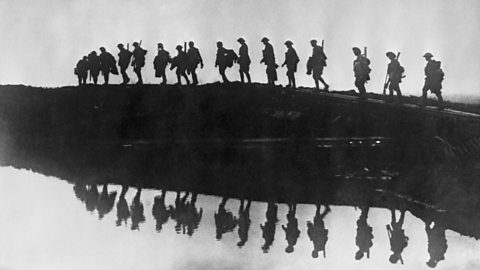Why did children join the war effort?
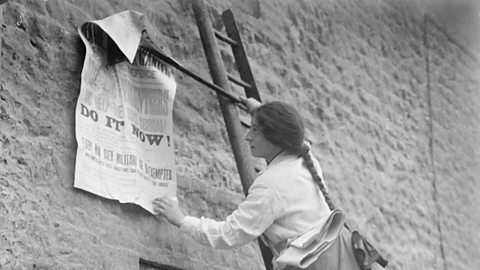
Between 1914 and 1918, everyone was expected to 'do their bit' to help with war work.
Many British children were very keen to lend a hand.
They took on jobs, grew vegetables and raised money.
They wanted to support their fathers and older brothers who were away fighting on the front line and help their families and mother at home.

Watch: How children helped at home
Watch our video to find out more about how children helped with the war effort.
[MUSIC PLAYS]
TOMMY: Since the war began, weâve all been doing our bit. My nameâs Tommy and I live âere.
Itâs breakfast time, but not my breakfast.
[CRUNCH]
Some for you, some for me.
[CRUNCH]
Some for you, some for me.
TOMMYâS MOTHER: Tommy! Thatâs the chickenâs breakfast, not yours!
TOMMY: But mum, Iâm hungry.
TOMMYâS MOTHER: Well youâd better start weeding then.
You can get breakfast AFTER youâve done weeding.
TOMMY: But muuuum!
TOMMYâS MOTHER: Come on Tommy, youâre the man of the house with your dad and brother away.
[MUSIC]
TOMMY: Weâll âave the best veggie patch in town.
IZA: [GIGGLES] Look at you!
TOMMY: Iâve been doing my bit. What about you? Doing something easy no doubt.
IZA: Well Iâm knitting scarves for soldiers and knittingâs not easy.
TOMMY: Yes it is.
IZA: Can you do it?
[TOMMY AND IZA SQUABBLE]
TOMMY: Thatâs Iza. She lives next door. Sheâs always trying to get one over me.
When I joined the Boy Scouts, she joined the Girl Guides.
The next best thing to being a soldier is a Boy Scout.
IZA: Iâve got my wool. Are you off to practise your signals?
Yes and if I pass that bit, Iâll get to practise drill like a soldier.
Iâm learning how to look after wounded soldiers.
TOMMY: That wonât be me. Iâll be the best sharp shooter. Bang bang bang!
TOMMYâS MUM: [GASP] My sausages! I had to queue an age for them. Pick âem up before a dog gets âem.
IZA AND TOMMY: LAUGHTER
TOMMYâS MUM: You can have the gritty one!
What did 'growing your own' mean?

Image caption, âGrowing your ownâ food became very important
There wasn't a lot of food because German U-Boats (submarines) were sinking the ships bringing supplies. Children helped by digging, weeding and looking after vegetable patches.
Image caption, Boys helped with the heavy work on farms
They also grew vegetables in gardens, back yards and even parks. In this picture, boy scouts are 'doing their bit' by setting rabbit traps.
Image caption, Girls also worked hard on vegetable patches and farms
The girls in this picture are taking in cabbages grown at their school. Girls also gathered fruit to eat at harvest time.
1 of 3
Fundraising and collecting
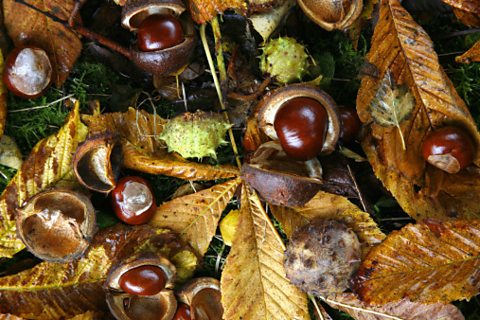
Children collected many useful things, such as blankets, books and even conkers.
Some things were sent to the soldiers at the front. Others were sold to raise funds for the war effort.
Money raised could be used to build warships or to help wounded soldiers. There was even a Blue Cross fund to help horses hurt in battle.

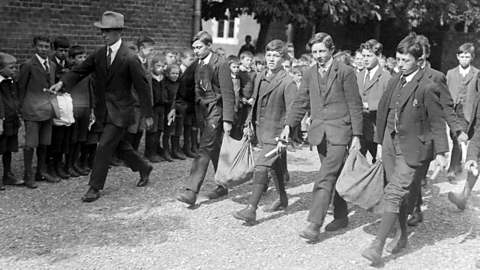
Image caption, Chemicals from conkers were used in making shells and bullets
Posters were put up in schools encouraging pupils to gather conkers. Around 3,000 tonnes were collected by Britain's children in 1917.
Image caption, 'Flag days' were held to make money for wartime projects
Children would sell little flags or badges that people could pin to their coats.
Image caption, Posters encouraged people to collect hens' eggs
Boys and girls helped to collect the eggs, which were used to feed wounded soldiers. Many homes kept chickens if they had space outside.
1 of 3
How did Boy Scouts help the war effort?
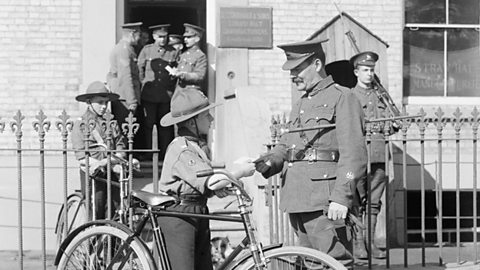
- They carried messages on behalf of the War Office.
- They guarded railway lines, water reservoirs and coastline.
- They watched the skies for attacks and sounded their bugles (a type of brass instrument) to signal when an air raid was over.
- Rifle ranges were opened where boys learnt how to shoot, so they could help to defend Britain if it was invaded.

How did Girl Guides help the war effort?
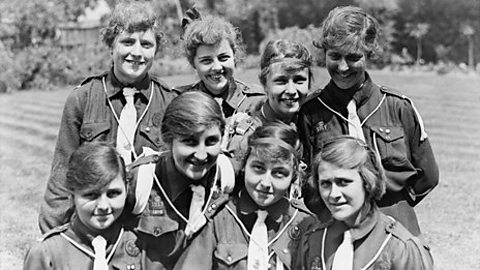
- They knitted socks and scarves to help keep British soldiers warm.
- They learned first aid so they could help with injuries.
- They carried important messages and helped deliver milk.
- Some reports even suggest that Girl Guides acted as messengers for the British Secret Service, MI5.

How did children help their families?
Many children tried hard to 'do their bit' in whatever way they could.
Sometimes this meant looking after younger brothers and sisters, helping with housework or joining long queues for food in the shops.
These small tasks were extremely helpful to the men and women who were struggling with the pressure of life in wartime.
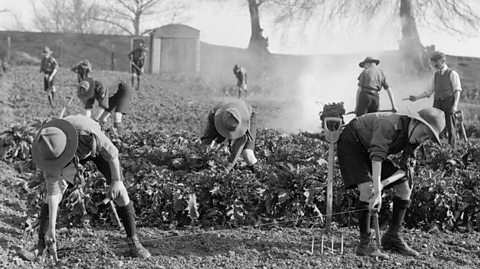 Image source, © IWM Q 30597
Image source, © IWM Q 30597Activity 1: Quiz â Children during World War One
Bitesize Primary games. gameBitesize Primary games
Play fun and educational primary games in science, maths, English, history, geography, art, computing and modern languages.

More on World War One
Find out more by working through a topic
- count19 of 43
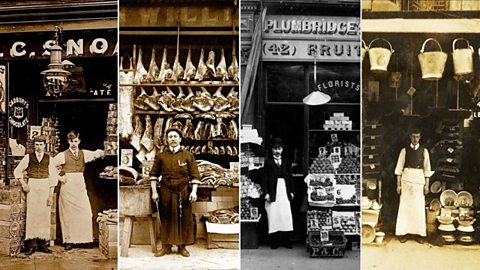
- count20 of 43

- count21 of 43
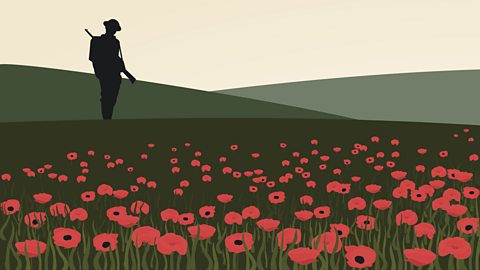
- count22 of 43
